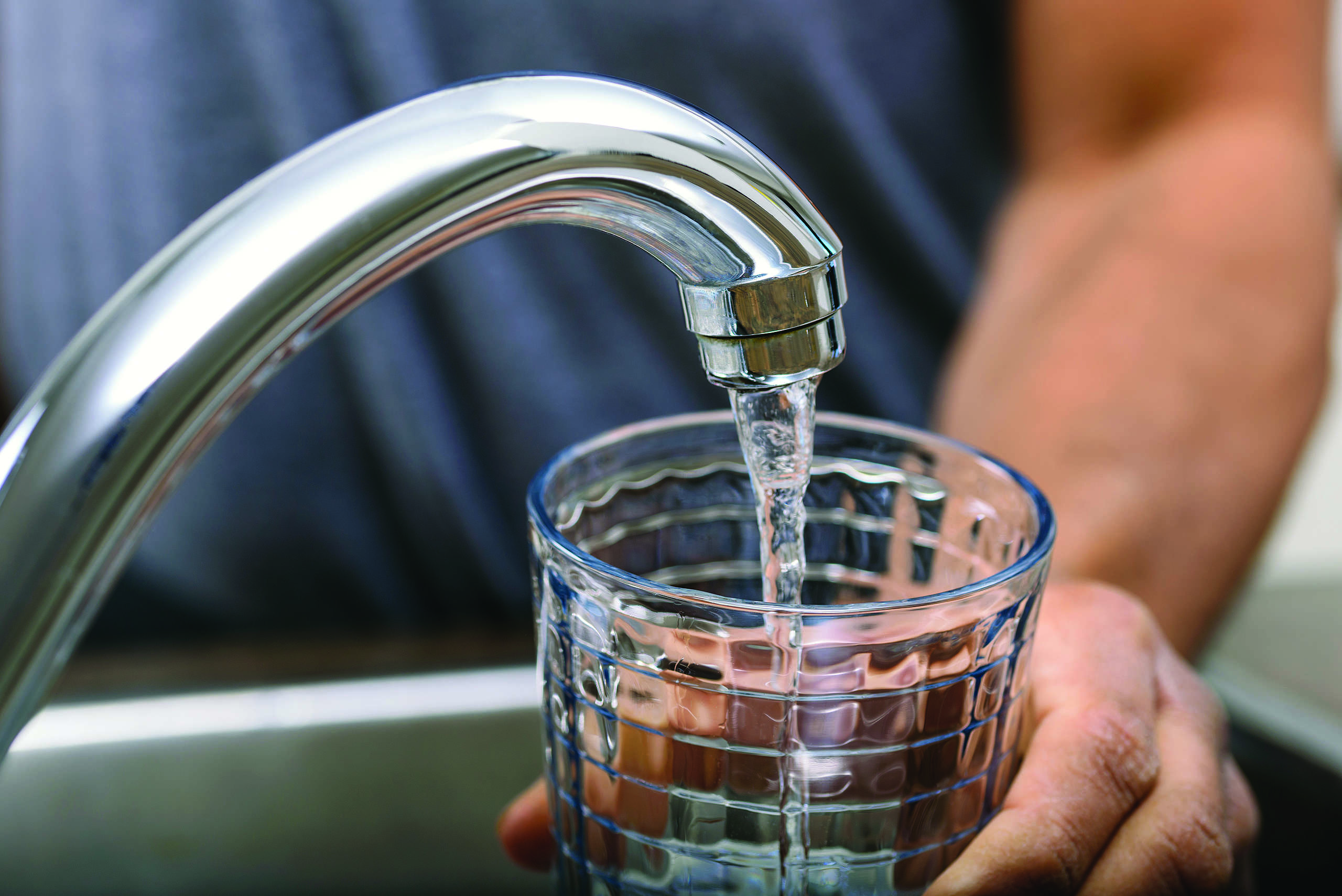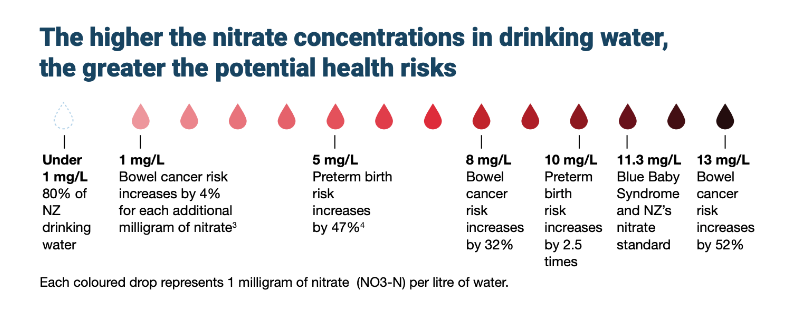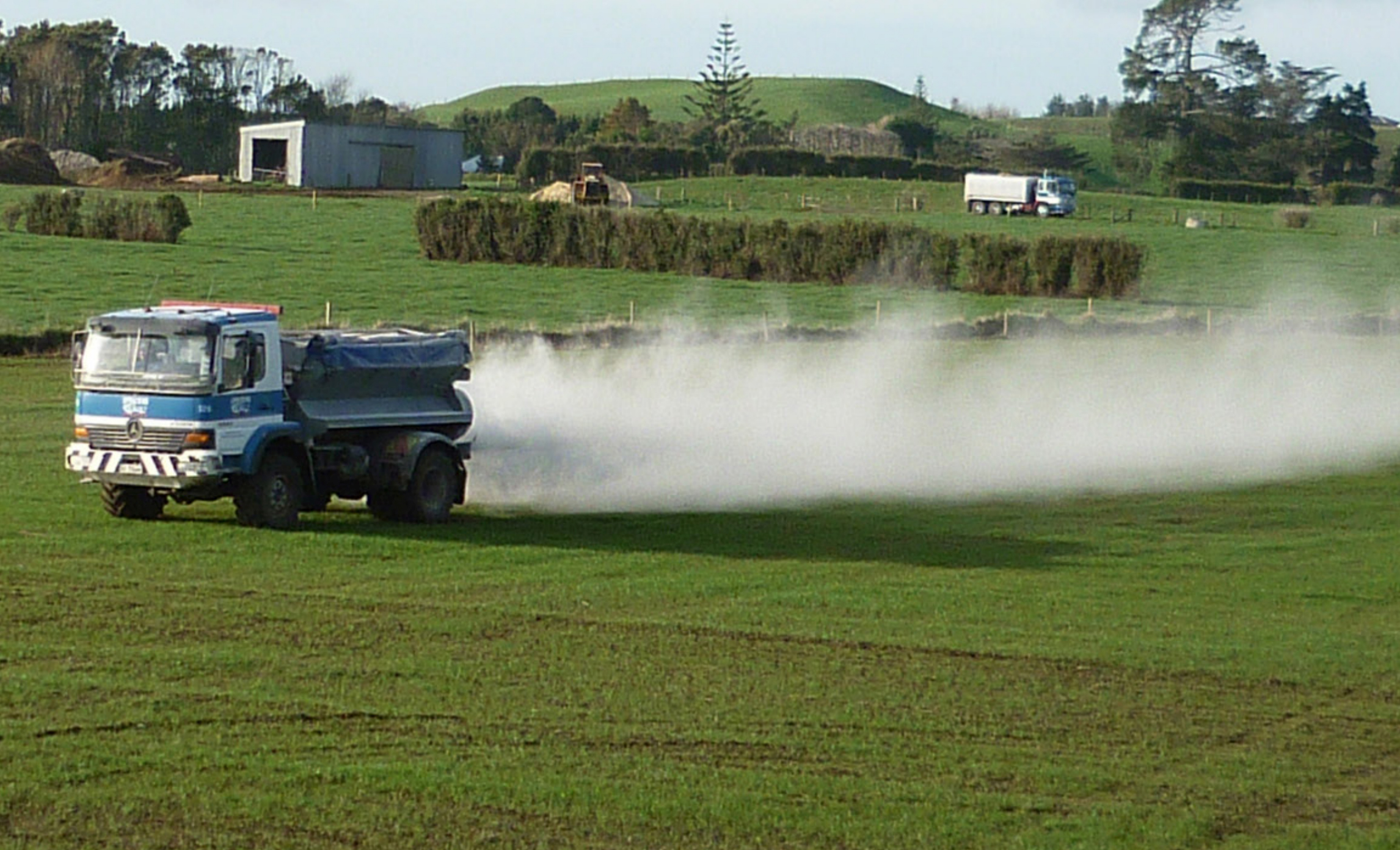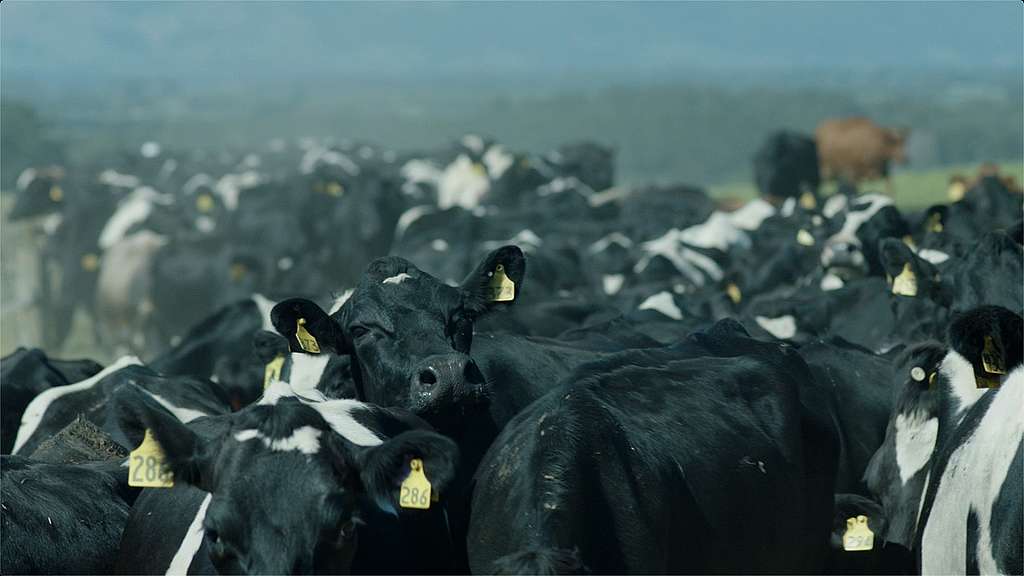Nitrate contamination in drinking water

Frequently asked questions
- Access to safe drinking water is a basic human right, but nitrate contamination of drinking water is putting many rural New Zealand families at risk
- The higher the concentration of nitrate contamination in drinking water, the greater the potential health risks.
- In New Zealand, the current drinking water nitrate limit is 11.3 mg/L, which is designed to prevent death from blue baby syndrome. However, experts say this limit does not account for the potential links to cancer or other adverse health outcomes.
Check out the information below for answers to frequently asked questions around nitrate water testing and nitrates in water.
Everyone should be able to trust that the water from their tap is safe to drink. Access to safe drinking water is a basic human right – but nitrate contamination of drinking water is putting people at risk.
Scientists warn that high concentrations of nitrate in our water could be causing 100 cases of bowel cancer and 40 deaths per year in New Zealand. [1] Research has shown a link to bowel cancer from long term exposure to nitrate in drinking water above 1 mg/L (NO3-N) – a much lower amount than the current drinking water standard of 11.3mg/L. [3]
Nitrate water also risks babies before birth and in the first few months. The Ministry of Health (Manatū Hauora) states, “If you are pregnant, high nitrate levels may reduce the amount of oxygen getting to your baby.” [5] The New Zealand College of Midwives advises people to consider lower levels of nitrate in drinking water as safer for pregnant women. [2] Increased risk of preterm and underweight birth have been found for pregnant people whose drinking water contains concentrations of 5 mg/L of nitrate and higher. [4] Also, blue baby syndrome can occur when high-nitrate water is used to make infant formula.
Please read the information on this page for the answers to frequently asked questions.
You can order a free nitrate bore water test here. If you would like to speak to someone further about what your nitrate test result means, or if you would like to learn more about our work to ensure healthy drinking water for all and how you can be involved, please get in touch with us at [email protected]
What do the nitrate numbers mean?
Most New Zealanders (80%) drink water from their tap that has 1.0 mg/L or less of nitrate (NO3-N). However, around 800,000 New Zealanders could be exposed to levels of nitrate that are potentially harmful. [1] The communities most likely to be exposed to elevated nitrate levels are those in rural areas with high farming intensity who rely on household bore water or town groundwater drinking supplies.
The higher the nitrate concentrations in drinking water, the greater the potential health risks.

There is evidence that having a source of drinking water with low concentrations of nitrate (under 1 mg/L) may avoid health risks.
Nitrate contamination in drinking water – what are the health risks?
For many years we have known that high concentrations of nitrate in drinking water used for mixing infant formula is linked to blue baby syndrome – where the nitrate deprives the baby’s blood of oxygen [5] [6]. This can be life-threatening.
In New Zealand our drinking water standards have a maximum allowable value (MAV) for nitrate (NO3-N) of 11.3 mg/L. This limit was set by the World Health Organisation in the 1950s as the limit necessary to avoid blue baby syndrome. [7] Public health physician Professor Michael Baker says the limit is “hopelessly out of date” because It does not account for chronic illnesses like cancer. [8]
There is growing evidence of potential harm from nitrate at levels as low as 1 mg/L. [3] [9] A precautionary approach would be to ensure that everyone has access to drinking water that has nitrate under 1 mg/L.
Rural communities dependent on town groundwater or household bore water supplies are the worst impacted by nitrate contamination – particularly those in dairy-intense regions of New Zealand.
The New Zealand College of Public Health Medicine and Public Health Association has stated that, “Excessive levels of nitrate pollution, from dairy farms, in drinking water is a direct threat to human health such as being linked to miscarriages in pregnant women. Long-term consumption of nitrate in drinking water is associated with the risk of several cancers such as thyroid, colorectal, non-Hodgkin’s lymphoma, stomach, bladder, breast, and ovarian.” [10]
Is nitrate water a cancer risk?
In 2006 The World Health Organisation’s International Agency for Research on Cancer (IARC) reported that, “ingested nitrate or nitrite under conditions that result in endogenous nitrosation is probably carcinogenic to humans.” [11]
A case-control study in Spain and Italy during 2008-2013 found bowel cancer risk is increased from long-term exposure to nitrate in drinking water at levels below current international guidelines for water safety. [9]
In 2018 a large Danish study involving 2.7 million people over 23 years found a link to increased bowel cancer risk at levels as low as only 0.87mg/L of nitrate in drinking water. [2]
The French Agency for Food, Environmental and Occupational Health & Safety (ANSES) confirmed in its 2022 analysis of scientific cancer studies that:
“There is an association between the risk of colorectal cancer and exposure to nitrites and/or nitrates, whether they are ingested via the consumption of processed meat or drinking water. The higher the exposure to these compounds, the greater the risk of colorectal cancer in the population.” [12]
A US meta analysis found that for every additional milligram of nitrate in water the cancer risk increases by 4% so that by 8 mg/L there is a 32% increased risk. [13]
In 2021 scientists found that nitrate contamination of drinking water could cause up to 100 cases of bowel cancer in New Zealand every year, leading to 40 deaths, and that around 800,000 New Zealanders (15%) have water supplies with potentially hazardous nitrate levels. [1]
Is nitrate water a risk for my baby?
High concentrations of nitrate in drinking water used for mixing infant formula is a risk for blue baby syndrome (methemoglobinemia) – where nitrate ingestion inhibits the transport of oxygen in the baby’s blood causing it to turn a blue colour. The condition can progress rapidly and in severe cases it can be life-threatening causing coma and death. [6]
Recently published studies have also found increased risk of negative reproductive outcomes from drinking high-nitrate water while pregnant.
A 2021 Califorian study found nitrate above 5 mg/L drunk by pregnant people increased the odds of spontaneous preterm birth by 47%, while exposure above 10 mg/L increased the odds 2.5 times. [4] A Danish study found nitrate associated with reduced birthweight and fetal growth restriction. [14] Other studies have found maternal exposure to nitrate from drinking water and diet increasing the risk of birth defects [21] congenital abnormalities [22] and neural tube defects. [23]
New Zealand Ministry of Health (Manatū Hauora) nitrate advice states, “If you are pregnant, high nitrate levels may reduce the amount of oxygen getting to your baby.” [5]
In 2021 The New Zealand College of Midwives advised that:
“Although the current MAV for nitrates in drinking water supplies is equivalent to 11.3 mg/L, it is prudent to take a precautionary approach and consider the lower threshold of 5 mg/L (or lower) as safer for pregnant women.” [2]
If you live in a rural area on a household bore supply and are of reproductive age we strongly recommend you get your drinking water tested for nitrate. This is also the advice of the Ministry of Health which states:
“If your drinking-water comes from a private bore you are responsible for testing your bore water to ensure it is safe. You should regularly test your water for nitrates – at least once per year – because levels change frequently.” [5]
Washington University says: “Women who are thinking about getting pregnant, or who are pregnant, should avoid drinking water contaminated with nitrates.”
How does nitrate get into our drinking water?
If your tap water from a bore or groundwater supply shows elevated nitrate concentrations the odds are that it is caused by diffuse pollution from intensive agricultural activity in your area. Some reticulated town supplies in Southland and Canterbury are also showing elevated nitrate.
Synthetic nitrogen fertiliser and intensive dairying are the largest cause of increased nitrate contamination in our water. [15] The parts of New Zealand with high dairy cow numbers are also the regional hotspots for high nitrate concentrations in drinking water, including Canterbury, Waikato and Southland. We are also seeing high nitrate contamination in some market gardening areas such as Richmond in the Tasman District.
Two chemical companies – Ravensdown and Ballance – distribute 98% of New Zealand’s synthetic nitrogen fertiliser and 63% of that is used by the dairy industry. [16]
Synthetic nitrogen fertiliser is added to pasture to accelerate grass growth so excessive numbers of cows can be kept on the land. Most of the nitrogen that cows ingest passes through them and is excreted as urine and dung which leeches nitrate into groundwater. The indirect leaching of nitrate from dairy cow urine patches is the largest source of nitrate contamination. The dairy industry is the biggest user of synthetic nitrogen fertiliser. In New Zealand we have seen a nearly sevenfold increase in synthetic nitrogen fertiliser use over the past 30 years [17], a doubling of the dairy herd, and worsening of nitrate concentrations in many groundwater wells.[18]

What can be done about nitrate in water?
Access to safe drinking water is a basic human right. 40% of New Zealanders rely on groundwater for their drinking water supply. The fertiliser and dairy industries are contaminating that vital supply and potentially turning people’s drinking water carcinogenic. Central and local governments must take responsibility for ensuring drinking water is safe by protecting our sources of drinking water – rivers lakes and aquifers – from nitrate contamination in the first place.
New Zealand has one of the highest bowel cancers rates in the world. We also have high rates of bore water use, particularly in rural areas where nitrate concentrations are known to be worsening as a consequence of intensive dairying and the huge increase in the use of synthetic nitrogen fertiliser that enables excessive dairy cow numbers.
Greenpeace is calling on the Government and regional councils to ensure healthy water for all communities by phasing out synthetic nitrogen fertiliser; lowering dairy cow stocking rates; and backing farmers to move to regenerative organic farming, so we can all live in a country where rivers run clear and our tap water is safe to drink.
What if my water test result shows elevated nitrate levels?
According to the United Nations, “Access to safe water is a fundamental human need and, therefore, a basic human right. Contaminated water jeopardizes both the physical and social health of all people.” [19]
Greenpeace believes polluters such as dairy giant Fonterra, and fertiliser companies Ravensdown and Ballance should be held to account for the damage they do. It’s the job of regulators and legislators – at local and central government – to prevent pollution, hold polluters responsible, and protect people’s water from contamination.
The evidence shows that having a source of drinking water with low concentrations of nitrate (under 1 mg/L) may avoid health risks. You can contact your regional council to advise them that you are not satisfied with the levels of nitrate in your drinking water.
They may recommend options such as reverse osmosis, drilling a deeper bore well or connecting to the town water supply. While nitrate can be removed from water using treatment processes such as ion exchange, distillation, and reverse osmosis, these can be expensive and cause other problems. Unfortunately boiling your water, mechanical filters, or chemical disinfection – such as chlorination – does not remove nitrate from water. Sourcing drinking water from a rainwater tank may be a solution to avoid high nitrate.
We recommend advising your regional council and local MP that you want them to take responsibility for the problem because local water users should not have to pay to fix contamination of their drinking water supply that is caused by fertiliser companies or intensive dairying in their area.
Don’t vegetables contain lots of nitrate?
Yes, vegetables are our highest source of dietary nitrate, but they also contain antioxidants like vitamin C. The process which leads to the creation of carcinogenic compounds from nitrates (called nitrosamines) may be neutralised by the antioxidants. The evidence is conclusive that eating plenty of fresh fruit and vegetables is good for general health and well being – and is in fact an important protection against illnesses like bowel cancer. [20]
Which nitrate number – how can 11.3 be the same as 50?
You will hear the amount of nitrate in water referred to by different numbers which, for practical purposes, mean the same thing. This can be confusing. The reason for this is that nitrate can be measured and stated as two different values:
1) nitrate-nitrogen (NO3-N) or,
2) nitrate (NO3)
The maximum allowable value (MAV) for nitrate in New Zealand can be stated as 50 mg/L (NO3) or as 11.3 mg/L (NO3-N).
If we measure nitrate concentrations using nitrate-nitrogen we get a lower range of numbers and a MAV of 11.3 and if we measure nitrate only we get a higher range of numbers and a MAV of 50. In terms of telling us how much nitrate is in our water they essentially mean the same thing. Similarly, when the numbers for nitrate health risks are stated, it’s important to be clear which is being quoted: nitrate-nitrogen (NO3-N) or nitrate (NO3).
Here is a conversion table so you can understand how they correspond.
Nitrate conversion table
| Nitrate (NO3) | Nitrate- nitrogen (NO3-N) | Health evidence | |
|---|---|---|---|
| 1 | 0.22 | ||
| 2 | 0.45 | ||
| 3 | 0.67 | ||
| 3.87 | 0.87 | Increased risk of bowel cancer according to Danish Study[3] | |
| 4 | 0.90 | ||
| 4.5 | 1.016 | ||
| 5 | 1.12 | ||
| 6 | 1.35 | ||
| 7 | 1.58 | ||
| 8 | 1.80 | ||
| 9 | 2.03 | ||
| 10 | 2.25 | ||
| 15 | 3.38 | ||
| 20 | 4.51 | ||
| 22.5 | 5.08 | Increased risk of preterm birth according to Californian Study[4] | |
| 25 | 5.64 | ||
| 30 | 6.77 | ||
| 35 | 7.90 | ||
| 40 | 9.03 | ||
| 45 | 10.16 | ||
| 50 | 11.30 | NZ nitrate standard or MAV |
How often should I test my bore water?
If you are on a household bore water supply, it should be laboratory tested for contaminants every year by you or your landlord. Because nitrate levels can fluctuate seasonally, it is recommended that you test your water each year in spring when nitrate levels tend to be at their highest. Testing at the same time each year also means you can observe nitrate trends in your water supply.
How can I get my drinking water tested for nitrate contamination?
See Greenpeace’s upcoming in-person free water testing events here.
Don’t see your town? Greenpeace is currently running a free mail-in nitrate contamination testing service for people who get their drinking water from a bore or a well. You can order a sampling kit here.
Is there a NZ map of nitrate contamination levels?
Through community testing and mail-in testing, Greenpeace has compiled the largest dataset of its kind and created ‘Know your Nitrate’ an interactive map of New Zealand showing nitrate contamination levels.
References
- Richards J, Chambers T, Hales S, Joy M, Radu T, Woodward A, Humphrey A, Randal E, Baker MG. Nitrate contamination in drinking water and colorectal cancer: Exposure assessment and estimated health burden in New Zealand. Environ Res. 2022 Mar. Link
- New Zealand College of Midwives, Member advisory: 27th May 2021, Nitrate levels in drinking water: risks for pregnant women and formula-fed babies. Link
- Schullehner et al. “Nitrate in drinking water and colorectal cancer risk: A nationwide population‐based cohort study.” International journal of cancer 143, no. 1 (2018): 73-79. Link
- Sherris Allison R, et al. Nitrate in Drinking Water during Pregnancy and Spontaneous Preterm Birth: A Retrospective Within-Mother Analysis in California. Environmental Health Perspectives. 2021;129(5):057001 Link
- Ministry of Health (2022)‘ Potential effects of high nitrate levels in drinking-water. Link
- Knobeloch, L., Salna, B., Hogan, A., Postle, J., & Anderson, H. (2000). Blue babies and nitrate-contaminated well water. Environmental health perspectives, 108(7), 675-678. Link
- World Health Organisation, History of Nitrate Guideline Development, February 2017 Link
- Radio New Zealand (2019) “Health expert renews call for study on nitrates in drinking water” Link
- Espejo‐Herrera N, Gràcia‐Lavedan E, Boldo E, Aragonés N, Pérez‐Gómez B, Pollán M et al. Colorectal cancer risk and nitrate exposure through drinking water and diet. International Journal of Cancer 2016;139(2):334-346. Link
- NZCPHM – New Zealand College of Public Health Medicine and PHA – Public Health Association. “Submission to the Ministry for the Environment: Action for Healthy Waterways” (2019). Link
- International Agency for Research on Cancer. Ingested nitrate and nitrite, and cyanobacterial peptide toxins. Lyon (FRA) 2010. Accessed 25 Feb 2021. Link
- ANSES (French Agency for Food, Environmental and Occupational Health & Safety), Reducing dietary exposure to nitrites and nitrates, 12 July 2022. Link
- TEMKIN, A., EVANS, S., MANIDIS, T., CAMPBELL, C. and NAIDENKO, O., 2019. Exposure-based assessment and economic valuation of adverse birth outcomes and cancer risk due to nitrate in United States drinking water. Environmental Research, 176. Link
- Coffman VR, Jensen AS, Trabjerg BB, Pedersen CB, Hansen B, Sigsgaard T et al. Prenatal exposure to nitrate from drinking water and markers of fetal growth restriction: A population-based study of nearly one million Danish-born children. Environmental Health Perspectives. 2021;129(2):027002. Link
- MFE and Stats NZ 2015 ”Environmental Reporting: Nitrogen leached from soil 1990–2012” – from the dataset accessed May 2021. Link
- The NZ Fertiliser Association estimates dairy accounts for 63% of synthetic nitrogen usage; sheep and beef 28%; arable 6%; horticulture 2%; deer farming 1%. Link
- Stats NZ. “Fertilisers – nitrogen and phosphorus” (2021) Link
- Environment Canterbury 2016. “Annual groundwater quality survey,” Ten-year trends (2007 to 2016) in nitrate concentrations in annual survey wells, pg 7. May 2021 Link
- UN Secretary-General Statements and Messages, “ACCESS TO SAFE WATER FUNDAMENTAL HUMAN NEED, BASIC HUMAN RIGHT, SAYS SECRETARY-GENERAL IN MESSAGE ON WORLD WATER DAY,” 12/03/2001, Link
- Chambers, T., Douwes, J., Mannetje, A., Woodward, A., Baker, M., Wilson, N. and Hales, S. (2022), Nitrate in drinking water and cancer risk: the biological mechanism, epidemiological evidence and future research. Australian and New Zealand Journal of Public Health, 46: 105-108. Link
- Huber JC, Brender JD, Zheng Q, Sharkey JR, Vuong AM, Shinde MU et al. Maternal dietary intake of nitrates, nitrites and nitrosamines and selected birth defects in offspring: a case-control study. Nutrition Journal. 2013;12(1):1-10. http://www.nutritionj.com/content/12/1/34.
- Blaisdell J, Turyk ME, Almberg KS, Jones RM, Stayner LT. Prenatal exposure to nitrate in drinking water and the risk of congenital anomalies. Environmental Research. 2019;176:108553. https://doi.org/10.1016/j.envres.2019.108553
- Croen LA, Todoroff K, Shaw GM. Maternal Exposure to Nitrate from Drinking Water and Diet and Risk for Neural Tube Defects. American Journal of Epidemiology. 2001;153(4):325-331. https://doi.org/10.1093/aje/153.4.325
- NITRATES, BLUE BABY SYNDROME, AND DRINKING WATER: A Factsheet for Families Link: https://deohs.washington.edu/sites/default/files/documents/Nitrates_Blue_Baby_Syndrome_and_Drinking_Water_Community_Factsheet_Mar_2016.pdf

Sign on now to call on the New Zealand Govt to ban chemical nitrogen fertiliser.
Take Action